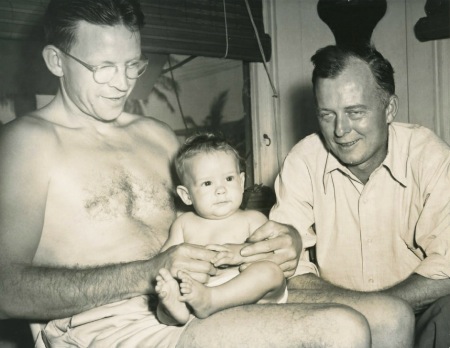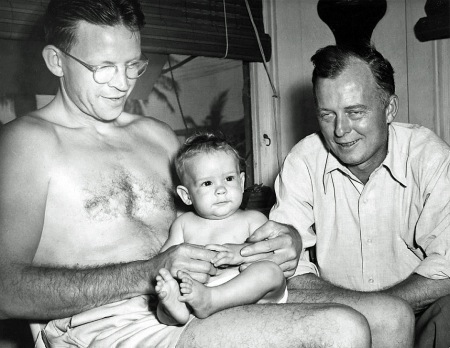Picture Magic
When I started researching my family tree in the early 1980s, I was offered quite a number of old photographs, which I gladly accepted. In those days, some people loaned me photographs and I took them to a specialty photo lab, where I had them copied photographically, an expensive proposition. Many of the photos that I have are damaged in various ways and I knew that they could be restored, digitally, but I had no idea how it was done. Well, now I know! After doing a bit of research on the web and noting that the going price, per restoration, was around $40, I decided to take a stab at it myself. The first thing I did was to buy a copy of Adobe Photoshop Elements 6 (PE 6). I then bought an Epson V500 Photo scanner and was a tad annoyed to find a free copy of PE 6 inside the box when I opened it. Oh, well ….. I installed PE 6 and started the program and that was when I discovered that PE 6 is an enormous memory hog. I have an “old” Mac mini (purchased in 2005) that only has 512M of RAM installed and 512M of RAM is all that can be installed in it. So now, I have to bite the bullet and buy another Mac mini, which these days will accept up to 4G of memory. I intend to max it out – it seems as though there is a race between the software developers and the hardware manufacturers to see who can force the poor user to buy more memory! Sigh ….
I unpacked and set up the scanner yesterday and played with it a little bit, while reading the book, Digital Restoration From Start to Finish, by Ctein. It recommends that you scan your pictures in color, even if they are black and white, which most all of mine are. The logic there is that every bit of digital information about the picture will be retrieved whereas if the photo is scanned at 16 bit B&W, not all of it is recovered. I read that following the proper procedure for scanning would save a lot of work later in Photoshop, which is what Ctein uses. PE 6 is a scaled down version of Photoshop, not as expensive because it doesn’t have quite as many tools to use. But it has more than enough for amateurs!
I’ll need to buy a book to help me master PE 6, because I have no idea what the term “layers” means and PE 6 (and Photoshop) is built around that concept. As an experiment, I took one of the pictures that I have – it is in very good shape – and scanned it. Here is the result:

There were a few blemishes, not visible here because the photograph is so small, that I fixed with the Spot Healing Brush and Clone Stamp tools. After finishing with those tools, I converted the color scan to black and white and then played with the contrast, using a tool called “Smart Fix” that improved the quality of the photograph a good deal, in my humble opinion:

Cool, huh? The picture is of my brother at the age of about 6 months, taken in 1949. The yellowing of the picture is the predictable result of age. I could have scanned the picture at 16 bit B&W with the same results, but the book said not to, so I’m following orders!
This one was very easy to fix – I have others that will prove to be quite the challenge, so I have plenty to keep me busy in the months to come.

Looks like you’re off to a good start, Jeff! That photo looks great (and your brother was really cute). I bought Photoshop Elements years ago for my children and they are now pretty accomplished with it. But I’m embarrassed to admit that I’ve never learned to use it (it really isn’t very intuitive) except for figuring out how to reduce the size of my photos for my blog. You’ve inspired me now—I think I’ll go to the library and see if I can find a good book to help me finally use our Photoshop Elements. Good luck with your own family pictures!
No need to be “embarrassed” about not learning to use PE 6! User-friendly? Intuitive? Not! The book to consult, from what I’ve learned, is written by Kelby and Kloskowski – The Photoshop Elements 6 Book for Digital Photographers. In reading the Amazon reviews, some praise it and others throw rocks at it, but the Missing Manual that many refer to as being easier to understand is no longer in print. Perhaps that might be available through inter-library loan, though. I’d prefer to have a copy of the book open before me while I’m working with the program, though. PE 6 is different than Photoshop – it isn’t as detailed as the big boy. Most of the tools are there, but they are not in the same place, so you really can’t use a book that refers to Photoshop when working with PE 6. It’s all a plot, I tell you, a plot!!